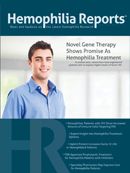Searching for the Causes of MS: Human Endogenous Retrovirus-HERV-Fc1
A study published in March 2012 in the Journal of Virology suggests that components of a virus called HERV-Fc1 are present at higher levels in plasma and immune cells of
people with active multiple sclerosis (MS). HERVFc1 is a type of a human endogenous retrovirus, which is derived from genes that are normally found in the DNA of all humans. Laska et al, the authors of the article, direct attention to a specific aspect of this virus that they suggest may either cause or result from immune attacks in MS. It has long been believed that a combination of environmental factors (such as viruses) and genetic factors are associated with increased risk of MS.
HERV-Fc1 had previously been shown to have a genetic association with MS, when components of the virus were found in blood and brains of MS patients. It is not uncommon for DNA to have genes that contain parts of retroviruses, but normally, these genes remain mostly silent, and few viral components are found circulating in the body. This particular study looked at whether components of HERV-Fc1 are found in higher quantities in the circulating immune cells of people with active MS compared to healthy Searching for the Causes of MS: Human Endogenous Retrovirus—HERV-Fc1 controls and people with inactive MS.
Within a group of 61 patients, researchers obtained blood samples from three groups: 30 healthy volunteers, 19 people with inactive MS (no relapses for an average of 36 months), and 22 people with active MS (relapses within an average of 3.2 months). Although all three groups had the same number of HERV copies in their DNA, the number of copies in RNA differed between groups. (RNA is the first step in making virus from the gene.) HERV levels were four times higher in plasma samples from people with active MS compared to healthy people and people with inactive MS.
The team then looked at a protein related to HERV, examining white blood cells that are known to be important in MS immune attacks. Again in white blood cells, more HERV-related protein was found in samples from people with active MS. The team also explored whether disease-modifying therapies made a difference in HERV levels in the active MS group, and found no difference between those on therapy versus those who were not on therapy. The findings suggest that HERV-related gene components are “switched on” at a higher level in immune cells of people with active MS. How and why that happens is not answered by this study. The association of their presence with cellular immune attacks could provide important information for the development of targeted therapies or even preventive vaccines.
Do HERV components play a role in launching or worsening the immune attacks on the central nervous system in people with MS? Those are questions that must be answered before practical application of the research findings is possible. The authors summarized their results, explaining that they had been the first “to quantify extracellular HERV-Fc1 RNA viral loads in plasma from MS patients and healthy controls.” They found a fourfold increase in extracellular HERV-Fc1 RNA titers in
patients with active MS compared with healthy controls (P < .001), findings that strengthen the link between HERV-Fc1 and the pathology of MS.
Source
• Laska MJ, Brudek T, Nissen KK, et al. Expression of HERVFc1, a human endogenous retrovirus, is increased in patients with active multiple sclerosis. J Virol. 2012;86:3713-3722.
